I am writing to your forum because I do not find solution for my problem. I am trying to represent graphically the Median catching time (MCT) of mosquito that we (my team and I) have collected (I am currently in an internship to study the malaria in Ivory Coast). The MCT represents the time for which 50% of the total malaria vectors were caught on humans. For example, we collected this sample:
Hour of collection / Mosquitoes number:
20H-21H = 1
21H-22H = 1
22H-23H = 2
23H-00H = 2
00H-01H = 13
01H-02H = 10
02H-03H = 15
03H-04H = 15
04H-05H = 8
05H-06H = 10
06H-07H = 6
Here the effective cumulated is 83 mosquitoes. And I am assuming that the median of this mosquito serie is 83+1/2 = 42 (And I don't even find this number on R), inducing a Median catching time at 2 am (02).
Therefore, I have tried to use the function "boxplot" with different parameters, but I cannot have what I want to represent. Indeed, I have boxes for each hour of collection when I want the representation of the effective cumulated over the time of collection. And the time use in R is "20H-21H" = 20, "21H-22H" = 21 etc.
I have found an article (Nicolas Moiroux, 2012) who presents the Median Catching Time and a boxplot that I should like to have. I copy the image of the cited boxplot: Boxplot_Moiroux2012
Thank you in advance for your help, and I hope that my grammar is fine (I speak and write mainly in French, my mother tongue).
Kind Regards, Edouard
PS : And regarding the code I have used with this set of data, here I am (with "Eff" = Number of mosquito and "Heure" = time of collection):
sum(Eff)
as.factor(Heure)
tapply(Eff,Heure,median) tapply(Heure,Eff,median)
boxplot(Eff,horizontal=T)
boxplot(Heure~Eff) boxplot(Eff~Heur))
(My skills on R are not very sharp...)
